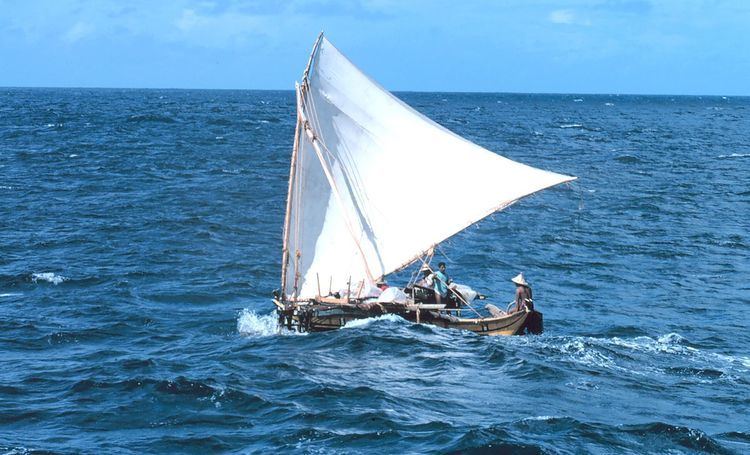 | ||
A fore-and-aft rig is a sailing rig consisting mainly of sails that are set along the line of the keel rather than perpendicular to it. Such sails are described as fore-and-aft rigged.
Contents
Description
Fore-and-aft rigged sails include staysails, Bermuda rigged sails, gaff rigged sails, gaff sails, gunter rig, lateen sails, lug sails, the spanker sail on a square rig and crab claw sails.
Fore-and-aft rigs include:
Barques and barquentines are partially square rigged and partially fore-and-aft rigged.
Historical development in Europe
The fore-and-aft rig began as a convention of southern Europe and the Mediterranean Sea: the generally gentle climate made its use practical, and in Italy a few centuries before the Renaissance it began to replace the square rig which had dominated all of Europe since the dawn of sea travel. Northern Europeans were resistant to adopting the fore-and-aft rig, despite having seen its use in the course of trade and during the Crusades. The Renaissance changed this: beginning in 1475, their use increased and within a hundred years the fore-and-aft rig was in common use on rivers and in estuaries in Britain, northern France, and the Low Countries, though the square rig remained standard for the harsher conditions of the open North Sea as well as for trans-Atlantic sailing. The lateen sail was more maneuverable and speedier, while the square rig was clumsy but seaworthy.
